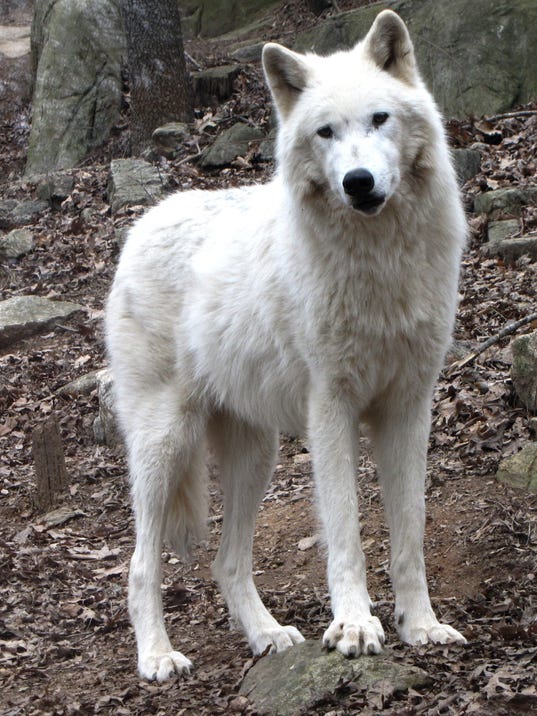
If you’ve visited the WNC Nature Center, you’ve likely seen a variety of animals that are commonly seen in and around your own backyard, such as clever raccoons, slithering corn snakes, and even an elusive bobcat. But the center also houses several species that no longer call Western North Carolina home. You won’t see mountain lions or gray wolves prowling around in a wild Appalachian forest, but have you ever wondered why?
In the 1800s, gray wolves inhabited over two-thirds of the United States, including parts of the Appalachians. They preyed on large populations of deer, elk and other grazing mammals. Unfortunately, with a growing human population and the expansion of agriculture and farming, wolf populations dropped drastically in many parts of the country. Farmland replaced the wolves’ natural habitat, and predator-control programs were aimed at getting rid of wolves to protect people and livestock. After a while, gray wolves only remained in Alaska and Minnesota.
Around the middle of the 20th century, the government began to reintroduce gray wolves into wild areas such as Yellowstone National Park and other protected lands, and wolf populations began to grow again. After several decades, wolf populations were large enough to survive on their own, and their range expanded to several northern states and parts of Canada. Now, gray wolves are no longer a protected species due to the success of reintroduction programs.
You may have recently heard some gray wolf-related news from the Nature Center; the Center recently added two wolf pups to their animal family. At just over 3 months old, the pups are playful, active, and adorable, and they are now on display in the gray wolf habitat!
See www.wncnaturecenter.com for updates.
source

No comments:
Post a Comment